
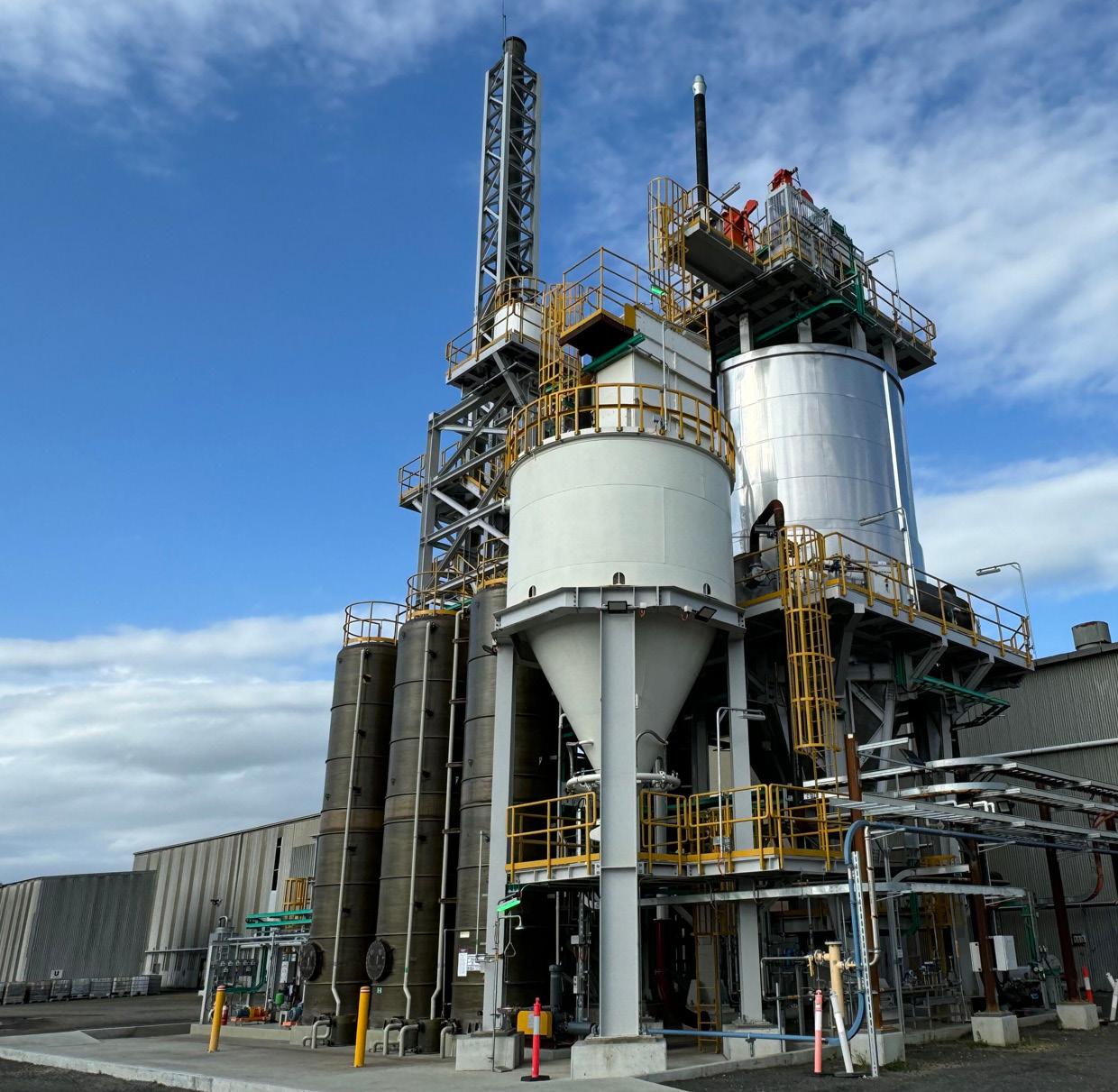



COMPANY MEMBERS
A primary role of the ADAA is to bring together producers and marketers of coal combustion products (CCPs). Our activities cover research and development into CCP usage, advocacy and technical assistance to CCP producers and users, as well as a forum for the exchange and publication of CCP information.
For more information visit us at www.adaa.asn.au
CURRENT MEMBERS
• Adbri Limited www.adbri.com.au
• BG&E Materials Technology www.bgeeng.com
• Bilmar Solutions www.bilmarsolutions.com.au
• Boral Quarries & Recycling www.boral.com.au
• Cement Australia www.cementaustralia.com.au
• CS Energy www.csenergy.com.au
• Daracon Constructions www.daracon.com.au
• Delta Electricity www.de.com.au
• Dr. Jane T Aiken Consulting & Environmental Services www.cessoils.com.au
• Energy Australia www.energyaustralia.com.au
• Hills Barker Blower www.barkblower.com.au
• Independent Fly Ash Brokers mflyash.com.au
• Independent Cement & Lime www.independentcement.com.au
• Intergen (Millmerran) www.intergen.com
• Latrobe Magnesium www.latrobemagnesium.com
• NRG Gladstone Power Station www.nrggos.com.au
• Origin Energy Eraring Power Station www.eraring-energy.com.au
• SA Premium Cement sapremium.com.au
• Stanwell Corporation www.stanwell.com
• Vecor Australia www.vecor.com.au
RECIPROCAL MEMBERSHIPS
• CSIRO www.cmit.csiro.au
• European Coal Combustion Products Association (ECOBA) www.ecoba.org
• UK Quality Ash Association www.ukqaa.org.uk
• American Coal Ash Association www.acaa-usa.org
• World Wide Coal Combustion Products Network (WWCCPN) www.wwccpn.org
The start to 2025 has heard a strong voice from members across the Ash Development Association of Australia. We are excited to share these latest industry updates and advancements in coal ash, with a key focus on innovation and coal ash infrastructure growth. In this edition of Coal Ash Matters, explore the conferences - completed and upcoming, sustainability discussion, and products and projects steering their way into the spotlight for 2025.
This issue opens with the emerging work around alkaline activated cements (AACs) using harvested fly ash. Discover how low-carbon binders are showing promise in durability, workability, and field trials, with potential to redefine sustainable construction and a reflection of broader industry efforts to diversify cementitious options beyond Portland cement.
A new green admixture developed in Brisbane showcases how fly ash and other supplementary cementitious materials (SCMs) can support strength performance and emission reduction. With local innovation leading the way, Australia continues to take necessary steps towards sustainable construction, with solutions tailored to national performance standards.
Boral has secured $24.5 million in federal funding to advance low-carbon cement production at its Berrima Facility. Central to the project is a significant increase in fly ash and other industrial by-products in kiln feed, reducing emissions and reliance on virgin materials. This initiative illustrates growing support from the Australian Government in taking serious action towards circular economy and sustainability goals.
The Sydney Gateway project details a standout example of fly ash use across Australian infrastructure. More than 15,000 m2 of retaining wall incorporated fly ash in concrete mixes, demonstrating its durability and versatility. This major development highlights how sustainable materials like fly ash can support smarter construction while improving key transport links for Sydney.
Latrobe magnesium is progressing towards becoming the first environmentally sustainable magnesium producer in the Western world. With its Victorian demonstration plant nearing production, the company is continuing its plans for commercial and international expansion. Their innovative use of coal ash to extract magnesium boldly exhibits how industrial by-products can fuel low-carbon manufacturing.
Concrete 2025, the Concrete institute of Australia’s national conference, will take place in Adelaide from 7th – 10th September. With over 200 technical presentations, the event will spotlight innovations in sustainable concrete. The ADAA, ASA, and APOZA will exhibit, highlighting how industrial by-products like fly ash contribute to durable, and low-carbon infrastructure. Visit our booth and explore sustainable solutions shaping concrete’s future.


WOCA The Workshop returns in October 2025 in Salt Lake City, Utah, offering a focused technical forum for the coal combustion products (CCP) sector. Co-hosted by ACAA and the University of Kentucky CAER, the event will cover regulatory challenges, innovation, and market trends. As a lead-in to WOCA XI in 2025, this workshop supports a technical dialogue in sustainable ash management.
As circular economy principles gain momentum, coal ash reuse continues to offer significant potential, but long-term progress relies on energy considerations. Reflecting on insights from the 2015 WOCA Conference, this article emphasises the environmental and economic potential of ash reuse while urging policy and energy alignment to enable real-world transformation in manufacturing and remediation practices.
New research led by the University of South Australia and Hallett Group explores the viability of high-chloride Port Augusta Dam Ash (PADA) as a sustainable SCM. With chloride treatment, PADA shows promising performance in concrete mixes, offering a new pathway for legacy ash reuse. The full findings will be presented at Concrete 2025, highlighting its potential in circular construction solutions.
Finally, we look to AshTrans Americas 2025 in setting a new attendance record, uniting global experts to explore coal combustion product reuse, policy, and market trends. With Australia’s Craig Heidrich chairing key SCM discussions, the event outlined international momentum in sustainable ash beneficiation. AshTrans now looks ahead to Amsterdam in October and expands globally with a new rotating ‘worldwide’ edition launching in 2026.
Editor Kaspar Moore
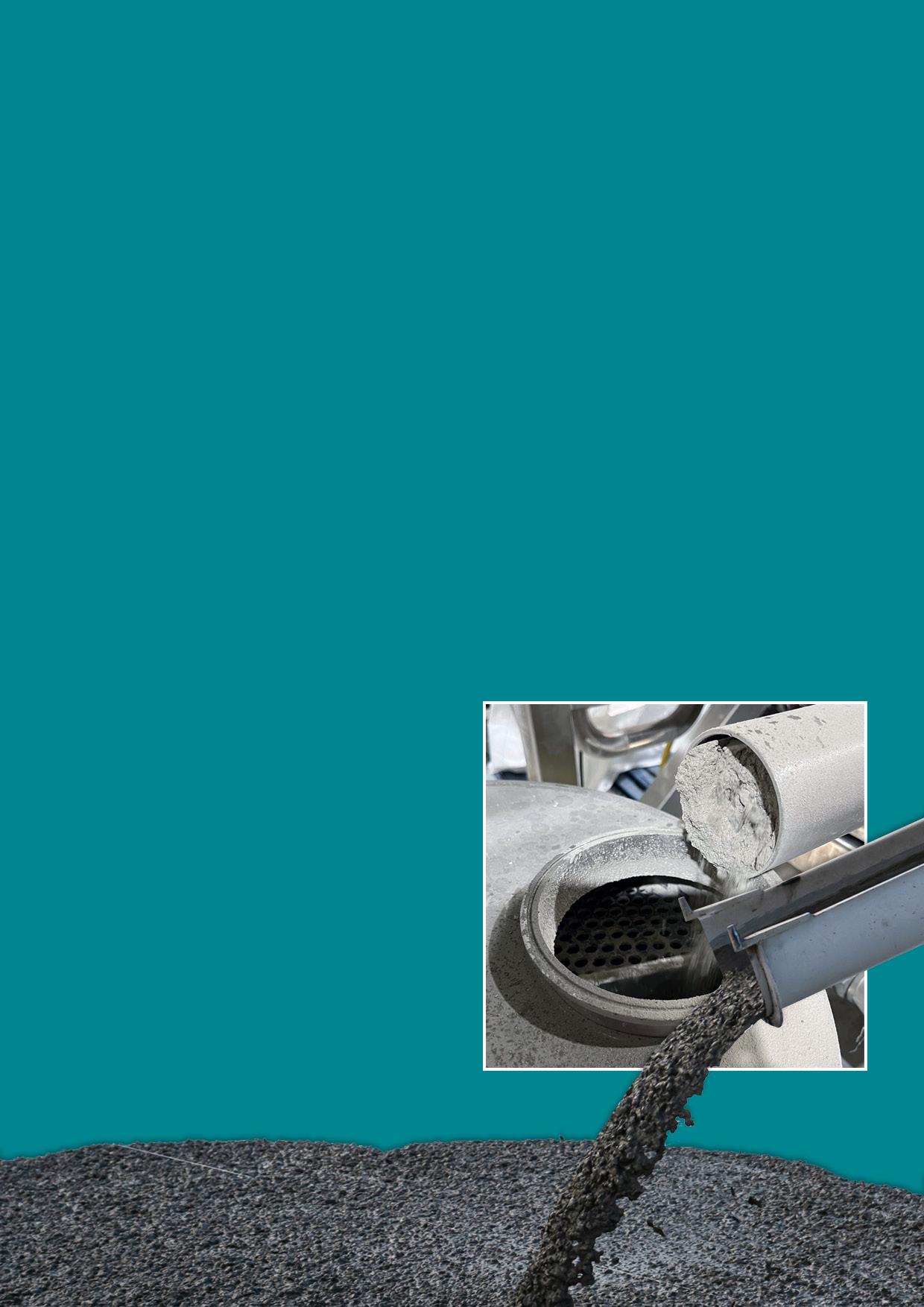
Sustainability remains a key priority in the construction industry, particularly in balancing environmental considerations with material performance. UniqueCem is among a number of innovators investigating alkaline activated cement powders, including its formulation known as Cemalt, which incorporates harvested fly ash, an abundant industrial by-product recoverable from storage repositories across the globe.
By using materials sourced from sectors such as mining, energy, and chemical processing, UniqueCem aims to offer construction options that integrate recycled material and are designed to have a potentially lower carbon footprint than traditional options.
This approach seeks to advance evolving practices in cement applications, with the intention of supporting long-term durability and environmental goals. These materials are being considered by engineers and builders looking to diversify material selection beyond conventional cement products.
Cemalt is described by UniqueCem as a proprietary alkaline activated cement (AAC) a type of binder system distinct from traditional Portland cement. Rather than relying on high-temperature clinker production, AACs are created from aluminosilicate-rich by-products like fly ash, slag, or metakaolin, activated with an alkaline solution.
A proprietary additive is included to help manage setting characteristics, forming a dry cementitious binder. This binder is designed to provide mechanical performance suitable for various construction applications, potentially reducing carbon emissions due to the absence of clinker.
Cemalt has been evaluated in laboratory and pilot-scale settings for the following properties:
• Strength and durability: Testing have shown compressive strength in line with conventional cement under similar curing conditions. The material has also been assessed for sulfate resistance and durability under certain exposure conditions.
• Environmental impact: AACs typically bypass the energy-intensive clinker process. Materials like Cemalt, which utilise fly ash and other by-products, may contribute to lower embodied carbon, depending on formulation and lifecycle analysis.
• Workability: Trials suggest that Cemalt mixtures can achieve high slump values while retaining cohesion, making them potentially suitable for applications requiring fluidity and ease of placement.
• Strength development: Observations indicate the material can reach strength benchmarks in early stages, which may allow for faster construction progress in some use cases.
• Chemical resistance: The binder system is under review for performance in chemically aggressive environments, including infrastructure exposed to marine or wastewater conditions.
A small-scale field trial using approximately 3 cubic meters of Cemaltbased concrete was conducted to assess performance in a real-world setting. Designed for an 80 mm slump, the mix was poured at around 200 mm without visible segregation. It subsequently met structural requirements for strength and durability. This demonstration highlights how the material responded under unexpected conditions, offering insight into its potential for applications where variability in workability occurs.
UniqueCem’s work with Cemalt reflects broader efforts across the sector to reimagine cementitious materials for a more sustainable future. While still emerging in real-world application, alkaline activated cements like Cemalt, are part of a growing interest in alternative binders that aim to reduce environmental impacts and increase the range of materials for infrastructure projects. As interest continues in low-carbon construction pathways, further testing, standardisation, and performance validation will be key to understanding where and how these materials may be effectively used in mainstream construction.
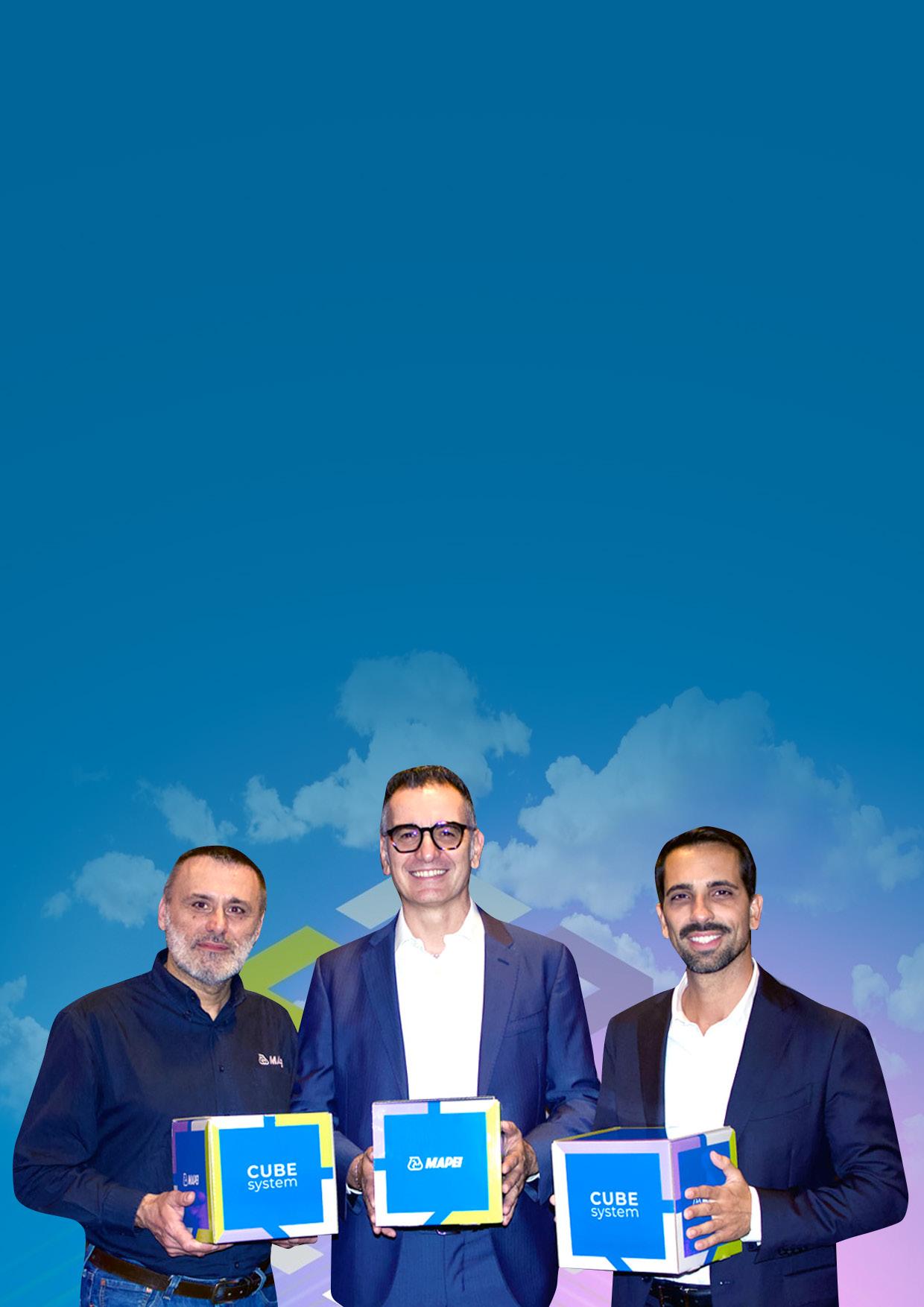
A new range of concrete admixtures developed in Australia highlights the growing role of coal ash and other supplementary cementitious materials (SCMs) in reducing the environmental impact of concrete production. Mapei, a manufacturer of chemical products for the construction industry, has introduced Mapecube 70, an admixture developed at its Brisbane Wacol facility.
A new range of concrete admixtures developed in Australia highlights the growing role of coal ash and other supplementary cementitious materials (SCMs) in reducing the environmental impact of concrete production. Mapei, a manufacturer of chemical products for the construction industry, has introduced Mapecube 70, an admixture developed at its Brisbane Wacol facility.
The formulation is designed to enhance strength performance while reducing reliance on traditional general-purpose cement. A key feature of the development is the incorporation of SCMs, particularly fly ash, a coal combustion by-product valued for its cementitious properties, and other SCMs such as granulated blast furnace slag
Fly ash is a by-product of coal-fired power stations. Its use in admixture systems enables higher volumes of alternative binders to be used while maintaining key performance standards, including long-term durability. This is a more sustainable mixture over traditional Portland cement, supporting both cost efficiency and reduced embodied carbon. Mapei’s admixture is reported to support strength development at multiple curing stages, from early-age strength to performance at seven and 28 days, attributes that are increasingly important as the sector pursues net zero emissions by 2050.
According to Mapei, global data illustrates that cement manufacturing contributed approximately 1.56 billion metric tons of CO2 in 2023, accounting for around 8 per cent of total global emissions. This shows the crucial importance of incorporating low-carbon materials like fly ash to reduce emissions.
As the construction industry advances toward its decarbonisation targets, the increased use of fly ash and other SCMs will play a key role in reducing its environmental footprint. This locally developed admixture, tailored to Australian conditions and performance standards, marks an important step towards the integration of fly ash into lower-carbon concrete, and reinforces the industry’s ongoing commitment to sustainable innovation and circular economy practices. Read more here.
Boral Limited has received $24.5 million in federal government funding to support a major decarbonisation project at its Berrima Cement Works in NSW. The project focuses on kiln feed optimisation, aiming to cut up to 100,000 tonnes of CO₂ emissions annually from cement manufacturing.
At the heart of this effort is a new specialised grinding circuit and infrastructure that will allow Boral to significantly increase the use of alternative raw materials (ARMs), particularly fly ash, along with other industrial by-products such as, granulated blast furnace slag, steel slag, recycled concrete fines, and cement fibre board, in place of limestone. These industrial by-products not only help reduce carbon-intensive calcination emissions but also require less energy to process.
The initiative will raise Boral’s ARM usage from 9% to up to 23% in kiln feed, helping to replace limestone, which emits CO2 when heated during clinker production. Clinker is the main ingredient in cement and contributes to the bulk of the sector’s process emissions, accounting for about 55% of the industry’s carbon footprint in Australia.
Fly ash and slag are especially valuable, given their cementitious properties and their role in supporting circular economy goals by repurposing industrial waste into construction materials.
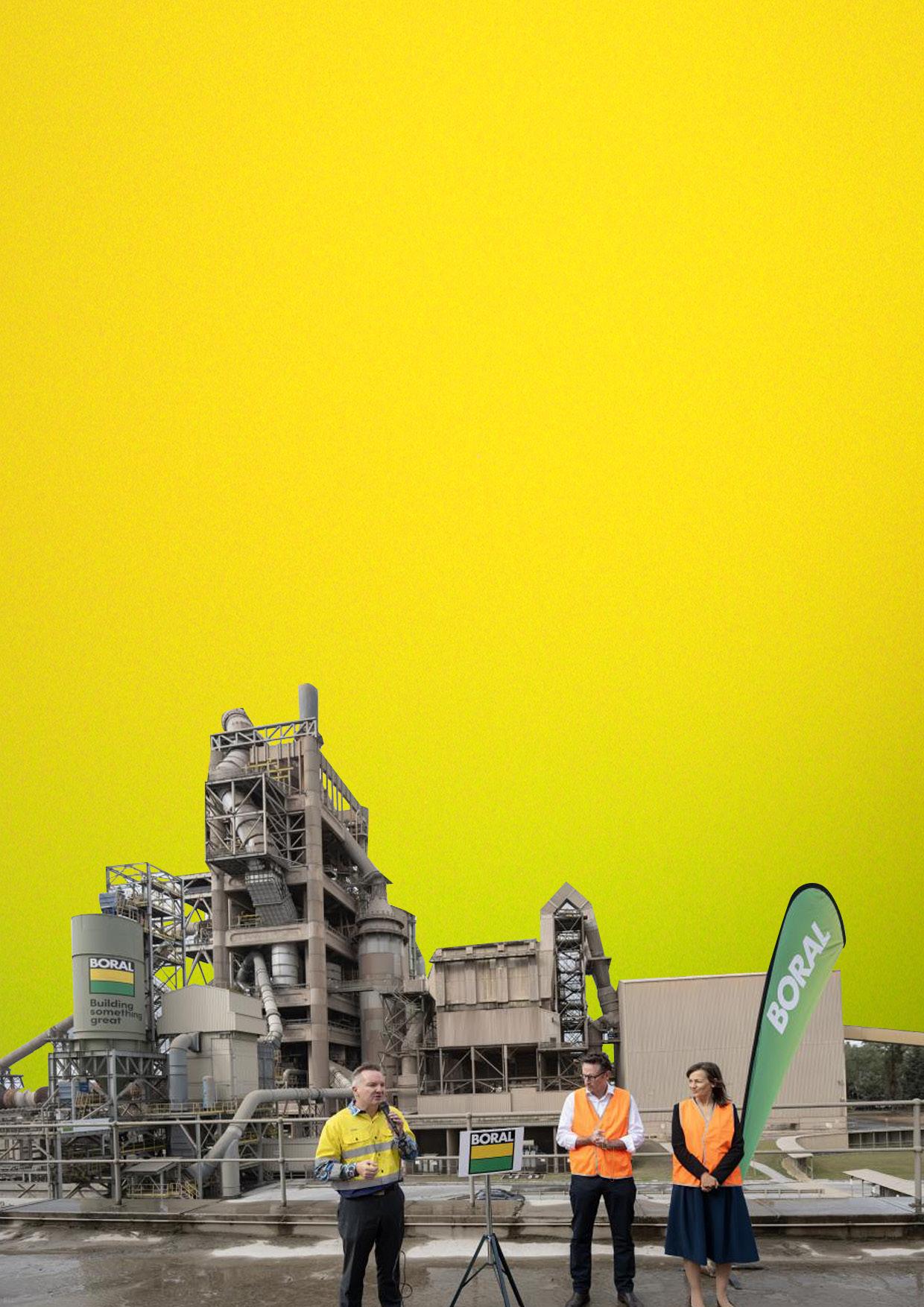
Fly ash is a fine, powdery by-product generated from burning pulverised coal in power plants. Rich in silica and alumina, it has cement-like properties that make it a valuable supplementary material in concrete, improving strength and durability while reducing the need for traditional cement.
The funding was announced by Minister for Climate Change and Energy Chris Bowen at the Berrima site, which currently supplies up to 40% of NSW and ACT’s cement. The grant comes from the federal Powering the Regions Fund, aimed at decarbonising key industrial sectors while maintaining their economic strength.
With the funding secured, Boral will proceed with detailed engineering, procurement, and construction, targeting full operational capability by 2028. Boral CEO Vik Bansal highlighted that this project supports the company’s broader sustainability goals, including staying below the safeguard mechanism thresholds and advancing the use of low-carbon and recycled materials in cement.
“This investment isn’t just about cutting emissions, it’s about transforming how we think about raw materials in construction,” Bansal said. “We’re proud to lead the way in building a cleaner future for the industry.”
This initiative strongly supports the development and broader utilisation of fly ash as a key low-carbon material in Australia’s construction sector. By significantly increasing the use of fly ash in cement production, Boral is helping to highlight the potential of this high-performance by-product.

The Sydney Gateway project is a landmark development in New South Wales’ transport infrastructure, significantly improving access between the St Peters Interchange, Sydney Airport, the M5, and the Eastern Distributor. Officially opened on 1st September 2024, it is already improving travel efficiency and easing congestion — but its impact goes well beyond traffic solutions. The project also showcases sustainability and innovative engineering through the use of fly ash in concrete mixes to reduce the environmental footprint.
As part of its sustainability commitment, the project incorporated a 25% supplementary cementitious material (SCM) mix, replacing a portion of traditional cement with fly ash, a fine by-product from coal fired power generation. The use of fly ash as an SCM also reduces embodied carbon, improves concrete durability, and supports the circular economy.
A major engineering component of the project was delivered by National Precast Master Precaster, The Geoquest Company Australia and New Zealand, which designed, supplied, and installed over 50 Mechanically Stabilised Earth (MSE) walls. These were deployed across five key areas: Northern Lands, St Peters Interchange, Tempe Tip, Airport Drive, and Qantas Drive — collectively covering over 15,000 square metres.
Each wall was built using Geoquest’s TerraPlus® concrete panels, measuring three metres wide by 1.5 metres high. The panels featured custom-designed surface patterns, adding an aesthetic layer to their structural purpose. Geoquest managed both design and installation — a first for the company — which streamlined operations and ensured a more integrated, cost-effective delivery.
The project also utilised several precast construction innovations: adjustable hanger bars, removable z-bar block-out systems, and the use of eight in-a-row table moulds for rapid panel production. These technologies helped accelerate build times, reduce material waste, and maintain high quality control — aligning with the broader sustainability goals of the project.
Fly ash featured prominently in the SCM concrete mix used throughout the project’s retaining structures. Known for its cementitious properties, fly ash improves concrete performance and reduces reliance on traditional cement, which is a major contributor to global CO2 emissions. Its use in Sydney Gateway exemplifies how recycled materials can be effectively integrated into major infrastructure without sacrificing strength or longevity.
In addition to transport benefits, Sydney Gateway is also returning local roads to communities, improving pedestrian and cycling links, and enhancing surrounding public spaces. It’s a holistic approach to infrastructure that considers long-term social and environmental outcomes.
By combining engineering innovation, sustainable materials like fly ash, and community-first planning, Sydney Gateway is setting a high standard for future urban infrastructure projects in Australia and beyond.
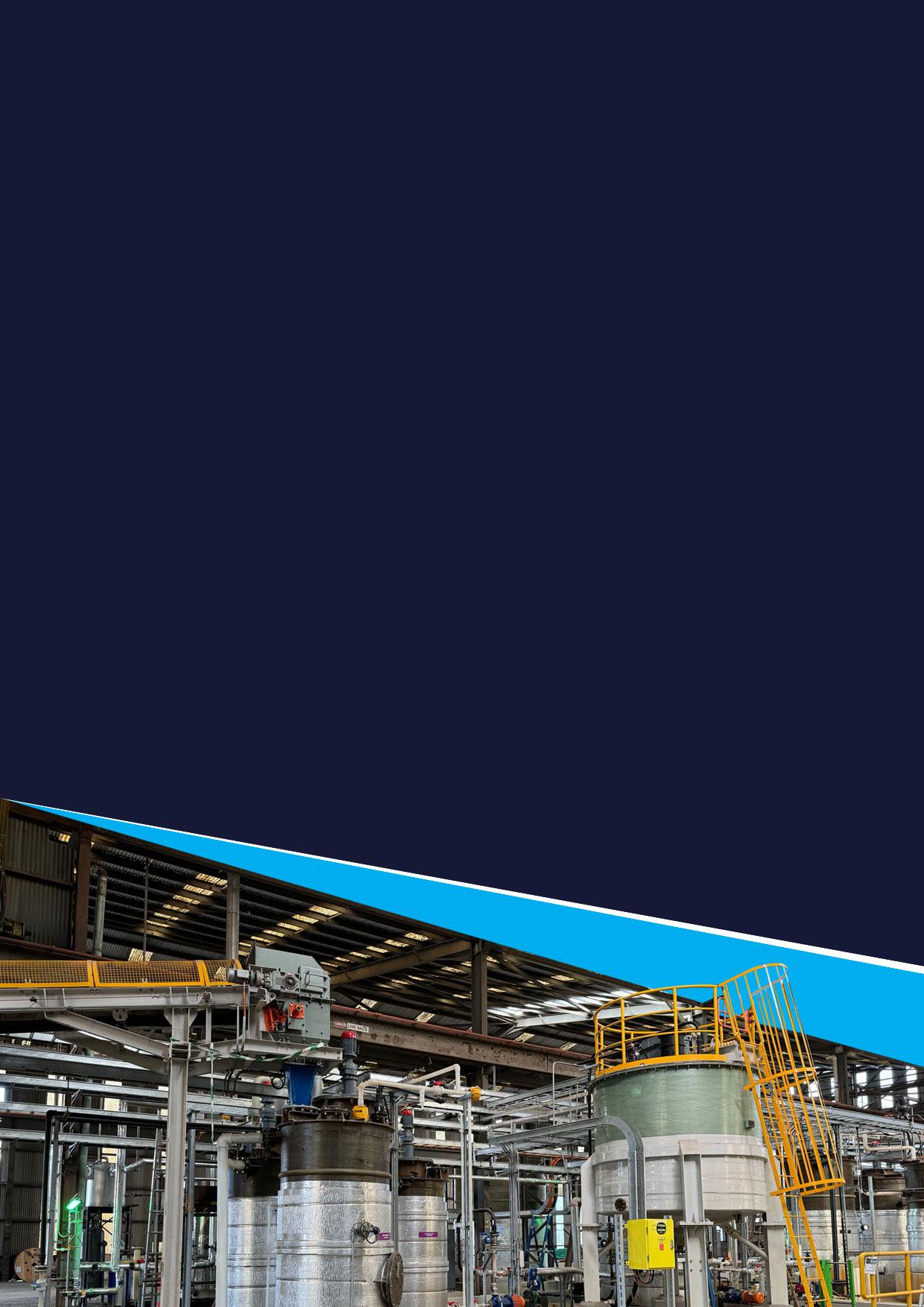
Since our last update, Latrobe Magnesium (LMG) has made significant progress in its three-stage pathway to becoming the first environmentally sustainable magnesium producer in the Western world.
LMG has completed the design, engineering, procurement, and major construction for its 1,000 tonnes per annum (tpa) Stage 1 Demonstration Plant in Victoria’s Latrobe Valley. The company is now preparing to commence Phase 1A production of magnesium oxide (MgO), targeting steady-state operations to validate its patented extraction process at commercial scale.Once operational, the plant will serve as a critical platform for LMG’s commercialisation strategy.
“The operating Demonstration Plant will showcase sustainable, on-spec MgO production, provide essential operational data for future permitting and build capability with our labour force.” said LMG CEO, David Paterson.
Phase 1B—focused on magnesium metal production—is scheduled to begin construction and commissioning in the second half of 2025, subject to funding. Most major equipment is already on site, with remaining works including Structural, Mechanical and Piping (SMP) and Electrical and Instrumentation (E&I) installation ready to proceed once funding is confirmed.
In parallel with Stage 1 activities, LMG has continued advancing plans for its 10,000 tpa Stage 2 Commercial Plant, also to be located in the Latrobe Valley. In partnership with Bechtel Australia, the company has completed a scope and cost proposal to undertake a Feasibility Study (FS), balancing detailed planning with cost discipline to support investment readiness. A detailed Location Assessment has also been completed, evaluating multiple site options in the region based on environmental, engineering, operational, and financial criteria.
Through its wholly owned subsidiary, Latrobe Magnesium Sarawak Sdn. Bhd. (LMS) has secured approval for a 250-megawatt (MW) hydropower allocation from the Sarawak Power Planning and Coordination Committee to support its proposed 100,000 tpa Stage 3 international mega plant in Sarawak, Malaysia.
This allocation is a key enabler, with progress now dependent on finalising a Power Purchase Agreement (PPA) with Sarawak Energy and advance joint venture partner discussions. LMS has also received environmental approval by the local Department of Environment for initial site clearing works.
The project is backed by Project Development Support (PDS) funding from the Australian Government’s Department of Foreign Affairs and Trade (DFAT). The funding, facilitated through the Southeast Asia Investment Deal Team, will support early advisory activities. Strategic engagement has also commenced with the United States Department of Defense through the Defence Industrial Base Consortium, and with the Commonwealth’s Industry Growth Program to pursue up to A$5 million in grant funding.
About
Latrobe Magnesium (ASX: LMG) is developing a magnesium production facility in Victoria’s Latrobe Valley, using a world-first patented process to extract magnesium metal and cementitious material from industrial ash – currently a waste resource from brown coal power generation. Magnesium has the best strength-to-weight ratio of all common structural metals and is increasingly used in high-growth sectors such as automotive, aerospace, medical, and electronics.
LMG’s project exemplifies ESG leadership by reducing waste, cutting carbon emissions, and promoting a circular economy.
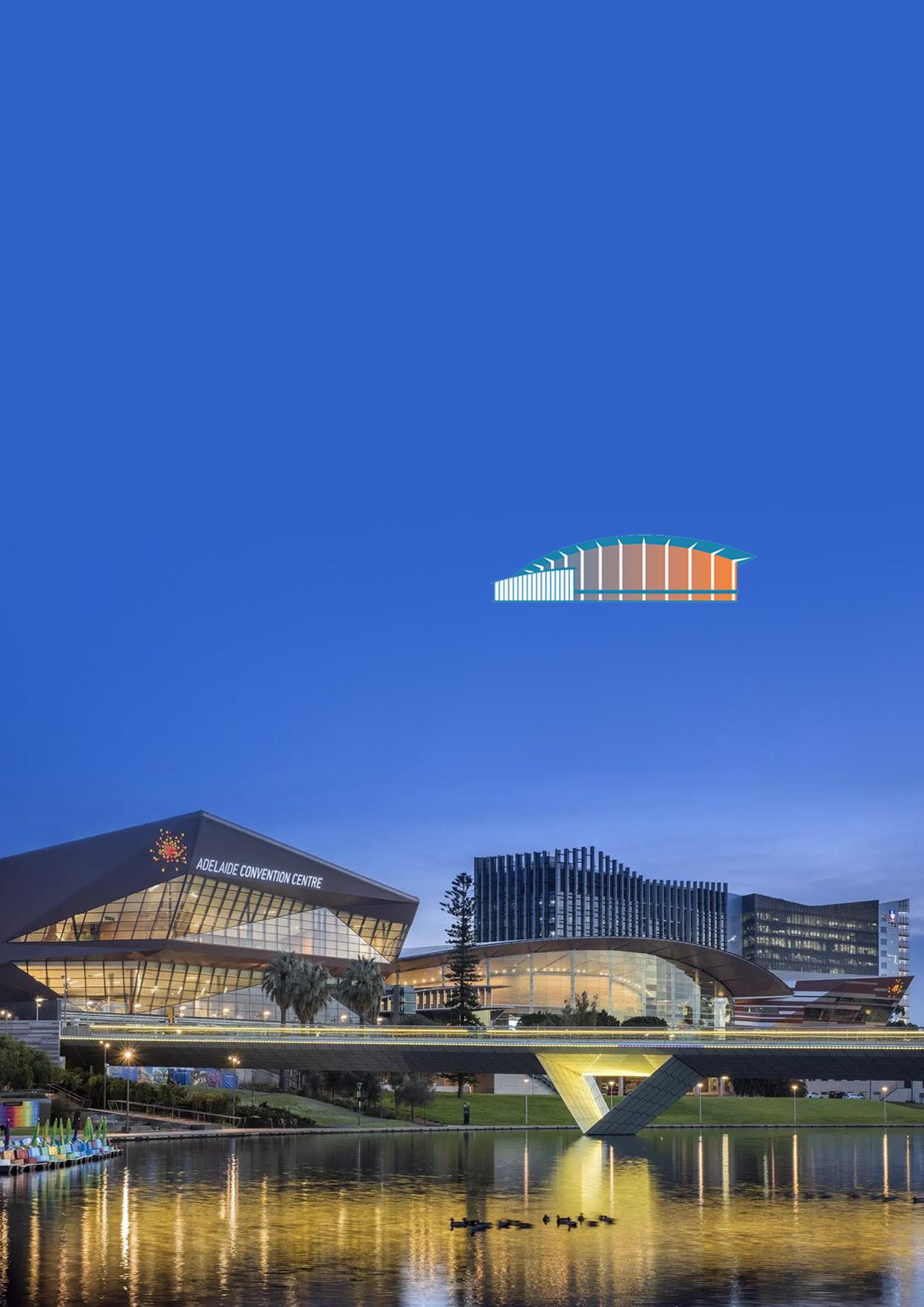
The Concrete Institute of Australia’s 32nd Biennial National Conference, Concrete 2025, is set to take place from the 7th - 10th of September at the Adelaide Convention Centre. This event will bring together engineers, researchers, manufacturers, and professional from across Australia and around the world to engage in discussions under the conference theme: Concrete Solutions for a Sustainable Future.
With over 200 technical presentations delivered over 3 days, across four streams, Concrete 2025 will showcase global best practices and the latest innovations in concrete design, durability, construction, and sustainability. Delegates can expect in-depth coverage of emerging technologies, from low-carbon concrete and digital design tools to novel reinforcement materials and circular economy strategies. Featured forums such as Women in Concrete and NEXGen are important highlights, fostering the next generation of concrete professionals.
We’re excited to announce that the Ash Development Association of Australia (ADAA), Australasian (Iron & Steel) Slag Association (ASA), and Australasian Pozzolan Association (APOZA) will be exhibiting at this major industry event. As key voices in the advancement of sustainable materials and technologies, we’ll be there to share our knowledge, connect with attendees, and showcase the critical role our sectors play in shaping the future of concrete.
As exhibitors, we’ll be hosting a dedicated booth where attendees can learn more about the role of fly ash in sustainable concrete. The Ash Development Association of Australia (ADAA) will highlight how this valuable by-product supports carbon reduction, enhances durability, and contributes to the circular economy. Whether you’re seeking information on specification trends, durability performance, or lifecycle benefits, our team will be on hand with technical expertise and up to date resources.
Concrete 2025 offers a valuable platform to engage with industry professionals, and we are proud to be part of this important dialogue. We invite all attendees to visit our booth and connect with us as we work together to build a resilient and sustainable future for concrete in Australia.
Don’t miss out, tickets are limited, so secure your place at Concrete 2025 today and be part of the conversation shaping the future of our industry.
For more information about the conference and how to attend, visit the Concrete Institute of Australia’s website here.
WOCA The Workshop will return in 2025, offering a specialised technical forum focused on the complex and evolving coal combustion products (CCPs) sector.
Scheduled for October 8–9 in Salt Lake City, Utah, the workshop is cohosted by the American Coal Ash Association (ACAA) and the University of Kentucky Center for Applied Energy Research (CAER)—the same organisations behind the internationally recognised World of Coal Ash (WOCA) conference. This workshop will take place alongside ACAA’s annual fall meeting at the Salt Lake City Marriott City Center in Salt Lake City, Utah.
Unlike broader conferences, WOCA The Workshop 2025 is the only workshop with a setting tailored specifically to the technical and regulatory challenges facing the CCP industry today. Over two days, attendees can expect to engage in presentations and discussions covering regulatory and permitting issues, harvesting practices and facilities (including engineering and consulting topics), emerging technologies, and market trends. The workshop also provides opportunities for networking in a smaller, highly focused setting, with structured meals and a welcome reception designed to foster open dialogue among industry peers.
The venue for this year’s event is the Salt Lake City Marriott City Center, with a preferred accommodation rate available until September 15. Pre-registration closes October 1, with on-site registration still available after that date.
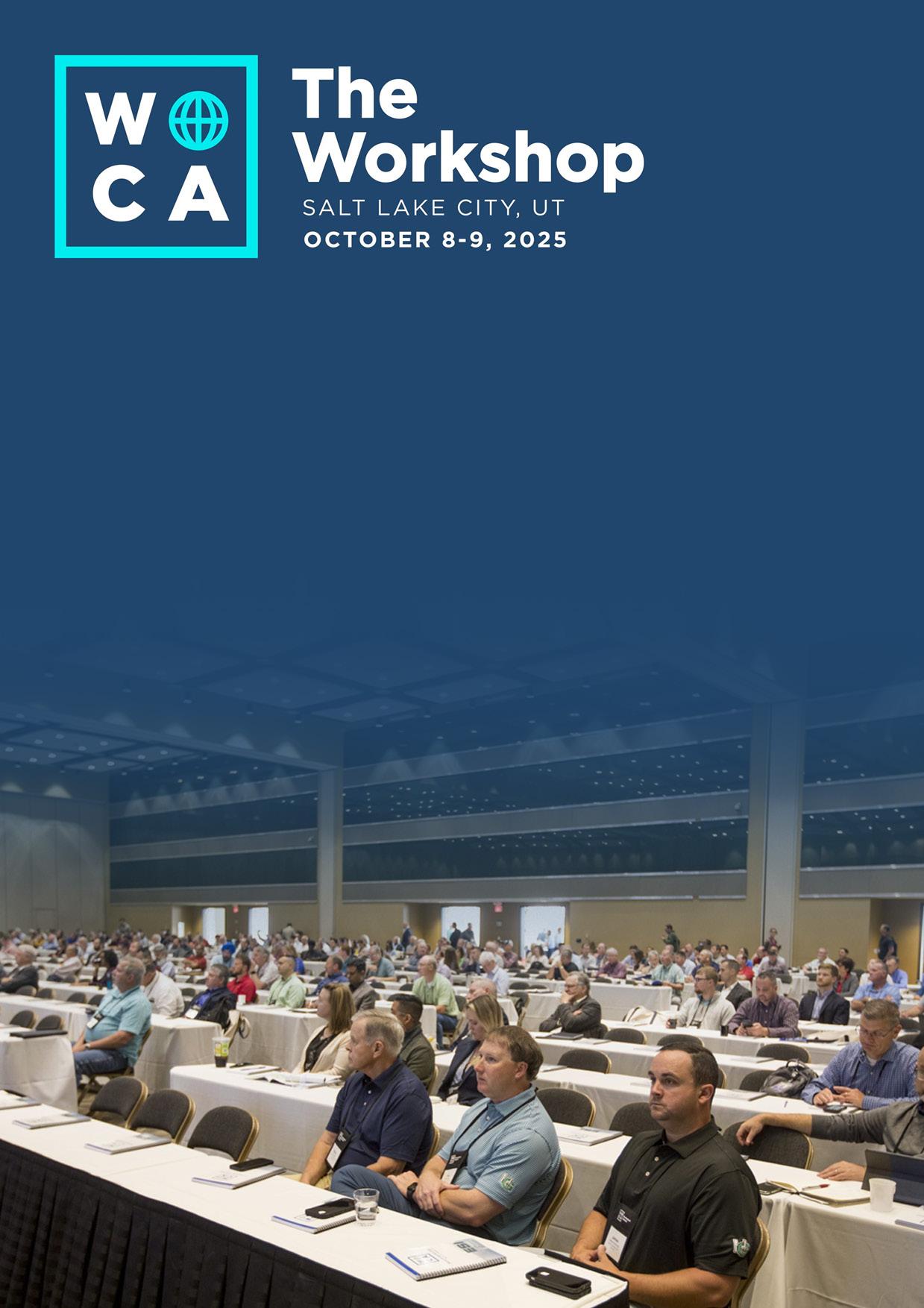
Beyond the 2025 workshop, the event also serves as a stepping stone toward WOCA XI, the next full World of Coal Ash conference, scheduled for the 4th-7th of May 2026 in Lexington, Kentucky. WOCA remains the world’s premier gathering of experts across the CCP spectrum, and the 2026 conference is the 11th joint biennial meeting with a focus on the science, applications and sustainability of worldwide coal combustion products (CCPs) as well as gasification products.
Whether you’re managing legacy materials, navigating regulatory updates, or developing new uses for coal ash, WOCA The Workshop 2025 offers a concise, content-rich opportunity to stay at the forefront of industry developments.
For more information on WOCA The Workshop 2025 or WOCA XI registration, sponsorship, and host hotel reservations, please visit the WOCA the Workshop 2025 meeting site and the WOCA XI website.
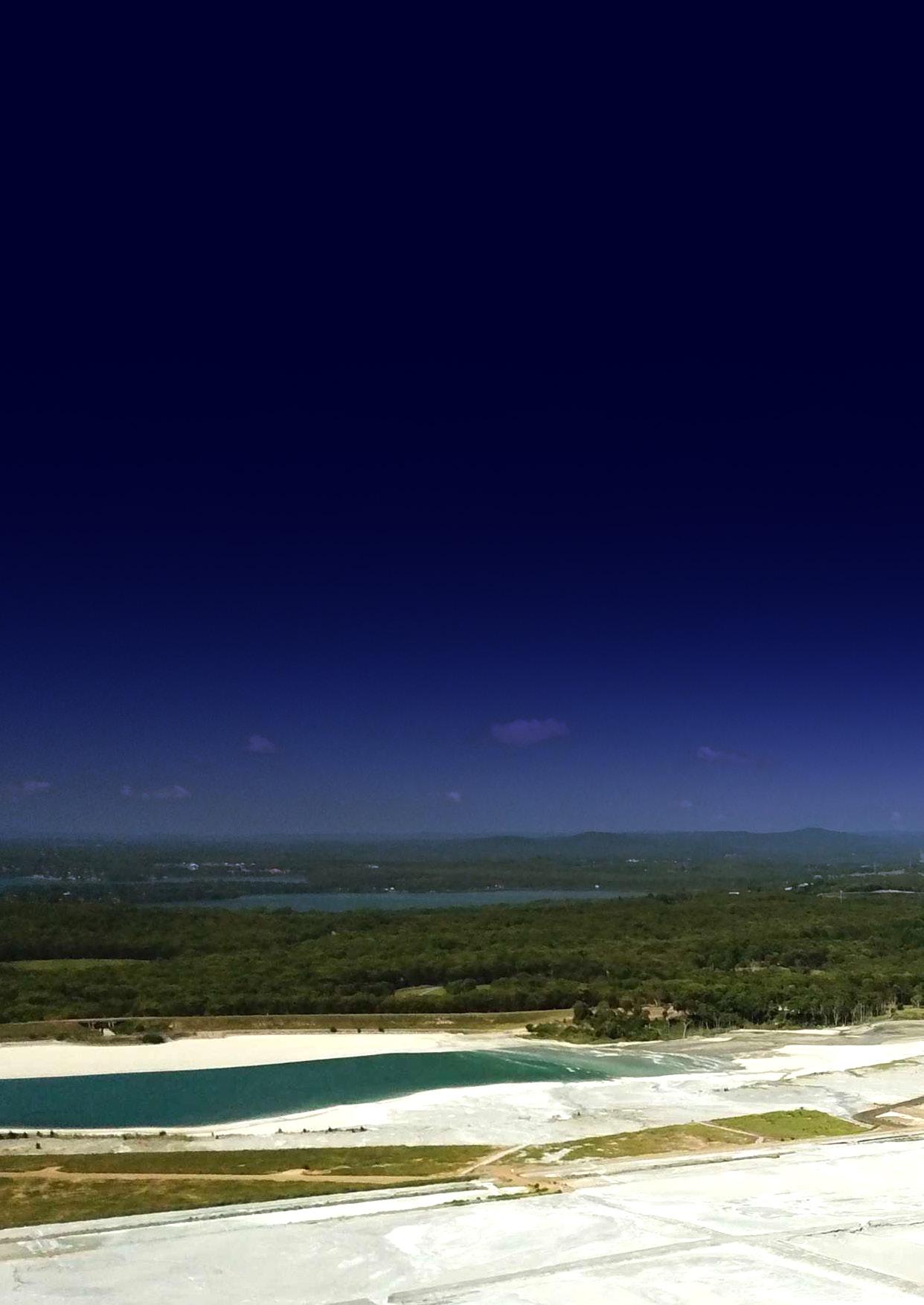
The World of Coal Ash is a biannual conference hosted through the University of Kentucky, USA from 2005. In 2015 the conference location was in Nashville of the state of Tennessee, in the United States of America.
We submitted two papers to this conference, which remain available in the online ash library research contributions of all participants of the past 20 years. What this library demonstrates are the options for coal ash reuse, site remediation, environmental works, impacts and assessments, and the management and solutions that achieve land use protection and site management for working coal fired power stations. The conference attended by engineers, hydrologists, entrepreneurs’, chemists, environment protection authorities, the coal fired power plant owner representatives, and ash reuse advocates; is representative of world-wide industry associations for ash, cement, and slag products across the Americas, Asia and Australia.
The 2015 conference was interesting, representing a time step in an emerging environmental crisis. Due to improvements in environmental protection regulations by United States authorities, their conversations included revitalising ash dam storages to upgrade environmental protection to surface and ground water. From Australia the opportunities highlighted were in the manufacture of light weight concrete blocks or aggregates, high MPa concrete, road base stabilisation materials, and applications for agricultural and lightweight soils.
What we realised by attending this World of Coal Ash Conference of 2015, is we were as women, advocates for our region with solutions to share for cementitious manufacturing and soil amendments. In the technical section we were all consumed by opportunity and the technologies applicable to the management of coal ash, and became critically aware we were advocating for reuse of a product we did not own. We were outsiders advocating for action without any means to enact the investment, vision and transformation needed.
As is the case for all states and territories of Australia, the governance for ash reuse opportunities is regulated through a state’s environment protection authority.
For New South Wales, the coal ash reuse potential is managed by a resource recovery order as a certification for subsequent transactions of reuse. Once characterised for chemical attribute limits such as heavy metals and boron with pH and electrical conductivity, the testing report provides legal certainty to ensure applications of the coal ash will not contribute to land contamination. Such legislation implemented by the NSW EPA remains unchanged since 2014 and is adopted by coal ash generators because these are regulations that hold integrity to policy and direction by all levels of Australian government.
In a time of improving environmental integrity, the Australian coal ash industry has not changed from its traditional cementitious manufacturing with disposal and repository storage of remaining ash production as the dominating and immediate operative. Consequently, various and many sites contain legacy ash management practices which still impact natural landscapes, creating latent environmental consequences.
For those environmentally active in 2015, creative or physical change has not happened. What were we expecting - that the time between thinking opportunity and sustainable action are immediate? Achievements over the past ten years for coal ash management have relevance to the construction industry and local government. Technical specifications with testing collaboration are now published. There is the peer reviewed Geopolymer Concrete Handbook, and for local council engineers in regional areas there are now look up tables for soils and engineer specifications with coal ash material being used in road construction and maintenance.
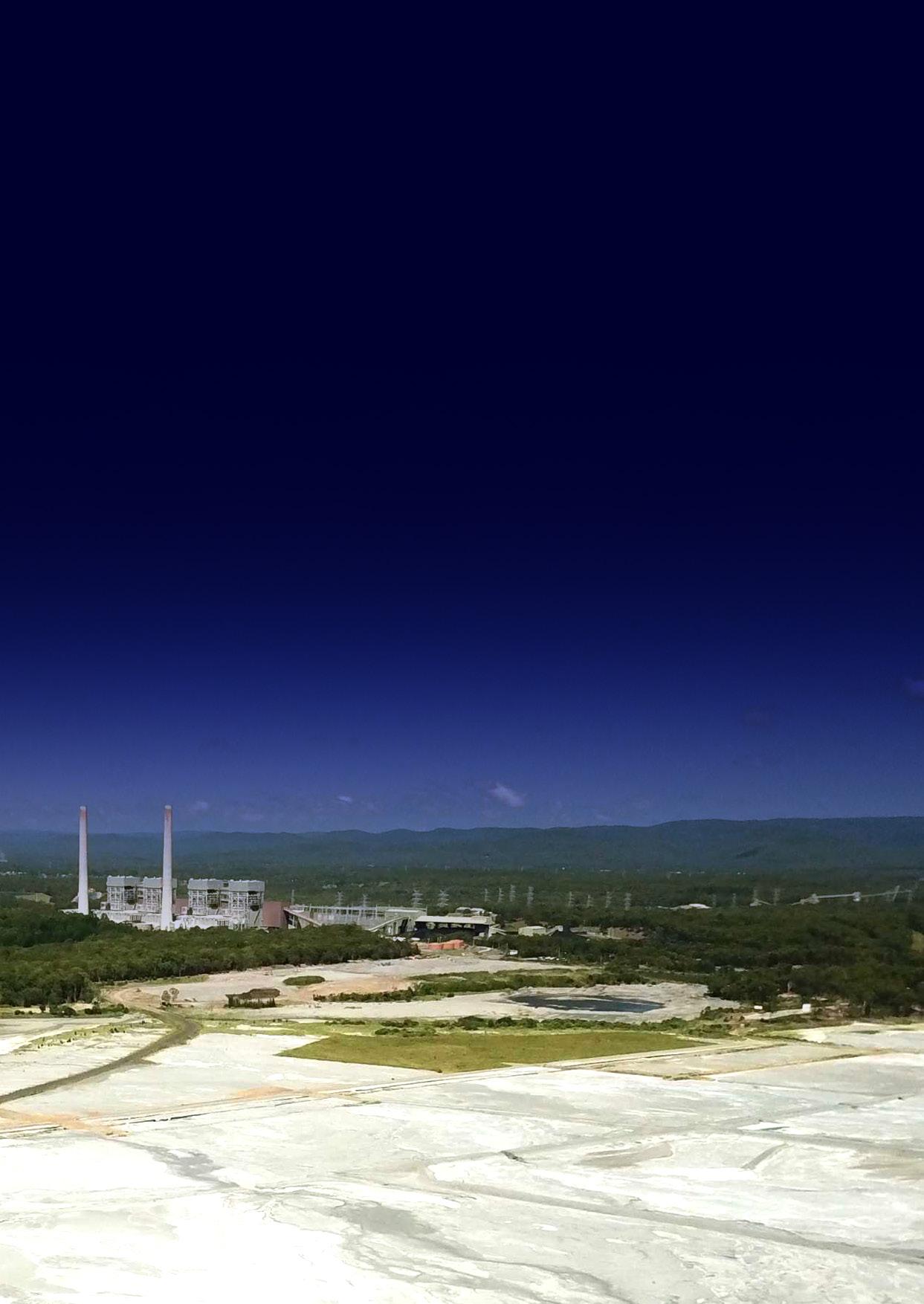
Technological shifts and policy changes over the past decade include the circularising of the waste economy, to manage the enormity of the waste issue faced by governments and industry presents additional opportunities in 2025.
A circular economy is an economic model that promotes sustainable and efficient use of resources to support environmental, economic and social outcomes. It shifts away from the current linear ‘take, make, dispose’ consumption model and can be entirely applicable to coal ash management. For the lay person a circularised economy has a beneficial effect on consumption and waste practice.
From an onlookers view the accessible coal ash waste from past coal mining and power generation can be an available resource for advanced materials science. These are bulk volumes of coal ash materials now 760 million tonnes of ash stored across Australia with some 40 million tonnes located at Portland and Wallerawang in New South Wales. If we wait with purpose, these volumes should be enough to implement and support economic development. However, whilst re-mining of coal ash resources is a consensus vision for sustainability and carbon emission offsets now attributed to coal mining and power plant operations, in enabling advanced manufacturing with coal ash byproducts, a community must also consider future energy requirements. Thus, we cannot go forward environmentally without acknowledging the energy generation needs for ash manufacturing sites.
The Ash Association of Australia established 1995 has an ongoing role in mediation across a diverse membership and audience. Dr Aiken has associate membership with ADDA technical and education committee since 2010. This article may not reflect the views of the Ash Development Association and is presented as a personal perspective and a regional review.

As the construction industry continues to seek sustainable alternatives for reducing its environmental impact, long-term stored fly ash is emerging as a valuable resource for producing more sustainable concrete. A collaborative study between the University of South Australia and Hallett Group, a member of the Ash Development Association of Australia (ADAA), explores the potential of Port Augusta Dam Ash (PADA) as a supplementary cementitious material (SCM) for concrete.
Tohid Yahyaee Nojoukambari, a PhD researcher at the University of South Australia has titled this important paper, “Evaluating Harvested High Chloride Content Ash: The Concrete Performance of Port Augusta Harvested Ash,” focuses on how treated legacy ash, which is historically overlooked due to its elevated chloride content, can be reintroduced into concrete production after undergoing a chloride removal treatment.
This research could open-up a new pathway for using stored fly ash, helping to reduce reliance on traditional cement while supporting the circular economy in the construction industry.
An Underutilised Resource
Port Augusta Dam Ash (PADA) has long been an under-utilised resource, largely ignored despite its potential, due to its high chloride content from exposure to seawater during the operation of a coal-fired power station. However, Tohid’s research demonstrates that with effective treatment, the chloride levels can be reduced to acceptable ranges, making PADA a viable alternative for use as an SCM.
The experimental phase of Tohid’s research compared 3 concrete mixes, a treated PADA, a commercial-grade fly ash, and a control mix with 100% general-purpose cement. These mixes were evaluated under:
• Chemical analysis using XRF (assessing primary oxide composition)
• Fresh properties testing (slump, air content, bleed, setting time, fresh density)
• Compressive strength testing at 1, 3, 7, 28, and 56 days
The PADA findings, which are expected to be officially published at Concrete 2025, 7th to 10th September, show promising results with potentially comparable or greater pozzolanic reactivity and long-term performance as a cement replacement. Early results are reported that concrete made with treated PADA performs well against traditional mixes at later ages, contributing to sustainability by reducing cement content and lowering CO2 emissions, and could be a high-performance SCM.
This study provides a fresh perspective on the potential of legacy fly ash, contributes to a broader fly ash resource recovery strategy, and supports circular economy initiatives within the construction industry.
The full paper is to be presented at Concrete 2025, where Tohid will discuss how this research aims to support sustainable material development, extend the lifecycle of fly ash resources, and provide datadriven pathways for industry adoption and standardisation of fly ash as an SCM in concrete.
Don’t miss the opportunity to learn more about this exciting research — stay tuned for more details on the upcoming presentation.
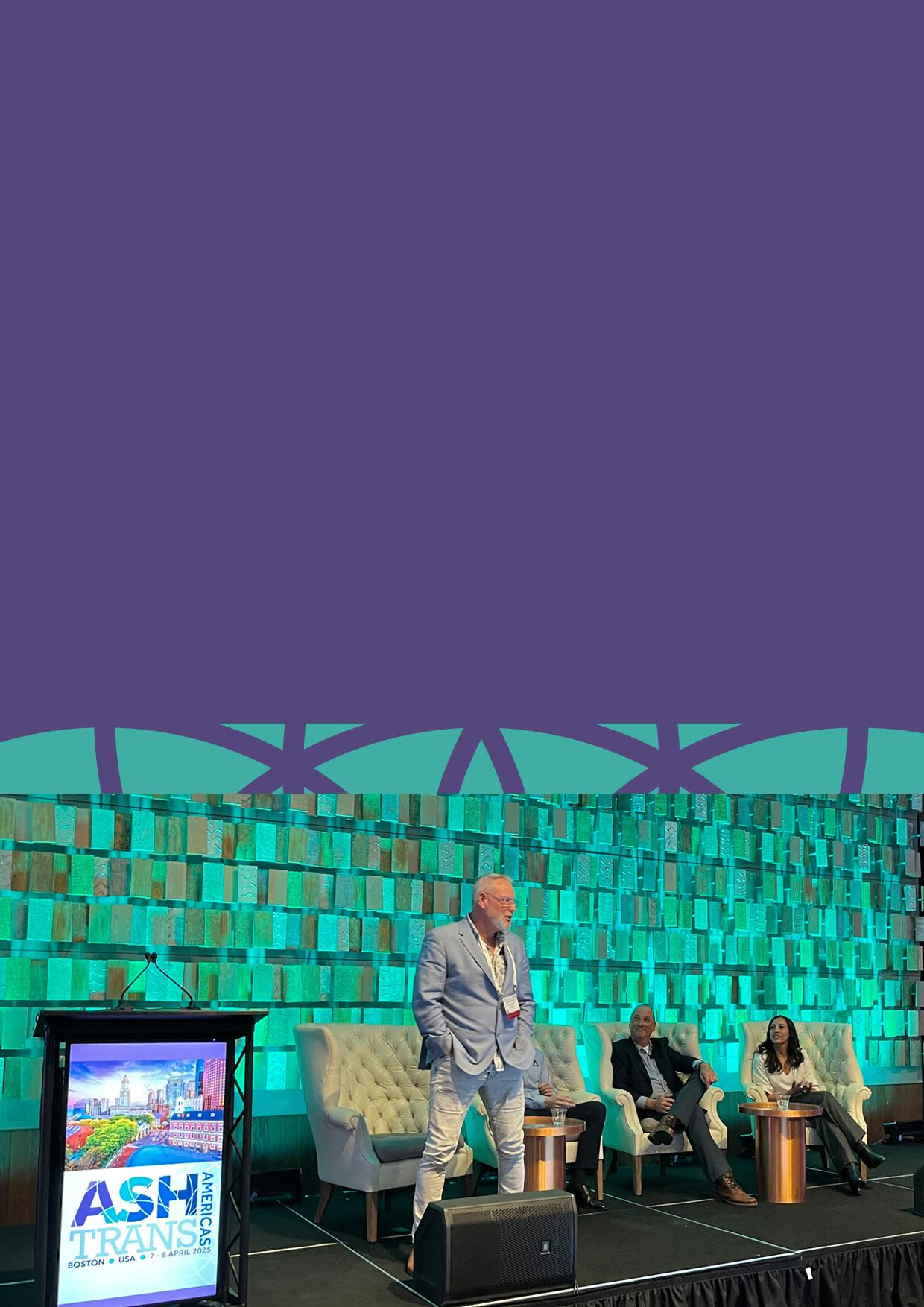
AshTrans Americas 2025 marked a significant milestone for the international coal combustion products (CCPs) community, with over 130 delegates from 14 countries gathering in Boston, United States to discuss logistics, innovation, policy, and market trends in ash management and reuse.
The event featured 20 international expert speakers from five nations, providing deep insights across technical and commercial challenges to access, beneficiate and distribute CCPs. Among the highlights was the participation of Craig Heidrich, CEO of the Ash Development Association of Australia, who chaired a highly anticipated session on beneficiation and the increasing role of CCPs as supplementary cementitious materials (SCMs) in sustainable construction. Mr Heidrich noted Australia’s current focus on exploring harvesting opportunities of CCPs as the country accelerates its phase-out of coal fired power. His insights contributed to the success of a technical program that broke previous AshTrans attendance records, eclipsing the previous high set in Prague last September.
AshTrans continues to establish itself as a vital forum for cross-border collaboration in the CCP sector, with discussions spanning decarbonisation, regulatory evolution, and circular economy applications. Looking ahead, AshTrans is set to return to Europe with its next ‘classic’ edition scheduled for 6–7 October at the Renaissance Amsterdam Hotel.
In a shift from the previous US-focused format, the organisers have announced a new annual ‘worldwide’ AshTrans series to complement the European event. While US editions will now be held biennially, the 2026 worldwide event will head to a new continent—expanding the reach and relevance of AshTrans even further.
Stay connected with AshTrans at www.ashtrans.global for updates and registration details.

Coal Ash Matters is the ADAA’s main educational publication that is produced twice a year for the benefit of ADAA members and readers. Before each publication is drafted, an email is sent out to all members, urging them to contribute stories that they think are of interest. The types of content we are looking for include:
•NEW DEVELOPMENTS
•TECHNOLOGICAL INNOVATIONS
•NEW PROJECTS
•NEW EMPLOYEES
•INDUSTRY RESEARCH
If you have an idea or some content that you think should be shared with the CCP community, get in contact with the editor, Sam Patane at publications@adaa.asn.au